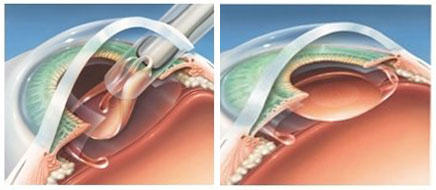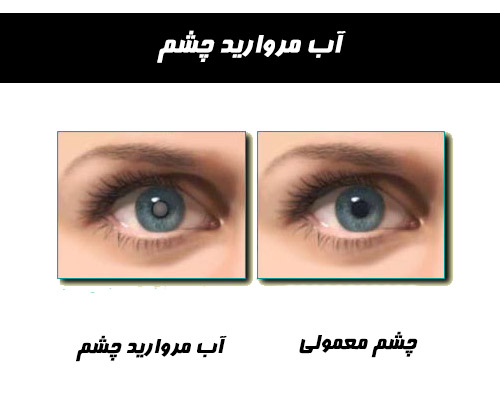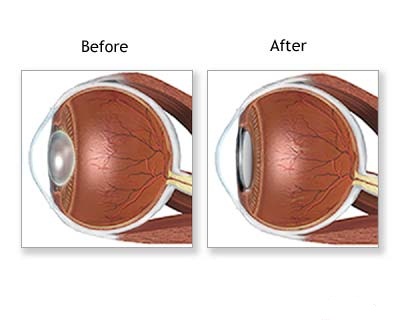A cataract is the progressive clouding of the crystalline lens inside the eye. The lens inside the eye works much like a camera lens, focusing light onto the retina for clear vision. It also adjusts the eye’s focus, letting us see things clearly both up close and far away.

The lens is mostly made of water and protein. The protein is arranged in a precise way that keeps the lens clear and let’s light pass through it. But as we age, some of the protein may clump together and start to cloud a small area of the lens. This is a cataract, and over time, it may grow larger and cloud more of the lens, making it harder to see.
Cataracts usually develop with advancing age, although in rare cases, they can be congenital (present at birth).

Cataract Causes:
Advancing age (most commonly)
Family history
Diabetes
Prolonged exposure to sunlight
Smoking
Prolonged use of corticosteroid
medications
Previous eye injury or inflammation
Previous eye surgery

Types of cataracts
Age-related
Congenital
Caused by illness or medicine
Traumatic cataracts

Cataract symptoms include:
Cataracts can affect only one eye, or more commonly, both eyes. For people who have cataracts, seeing is a bit like looking through a frosty or fogged-up window. Other symptoms are:
Blurry vision
Light sensitivity
Increasing difficulty with vision at
night
Need for brighter light for reading
and other activities
Seeing “halos” around lights
Frequent changes in eyeglass or
contact lens prescription
Fading or yellowing of colors
Double vision in a single eye
How Quickly Do Cataracts Progress?
The pace of cataract progression varies with each individual even eye to eyes of each one. In some cases, cataracts may take years to develop, while in other cases early-stage cataracts will never progress to a degree that requires treatment.

